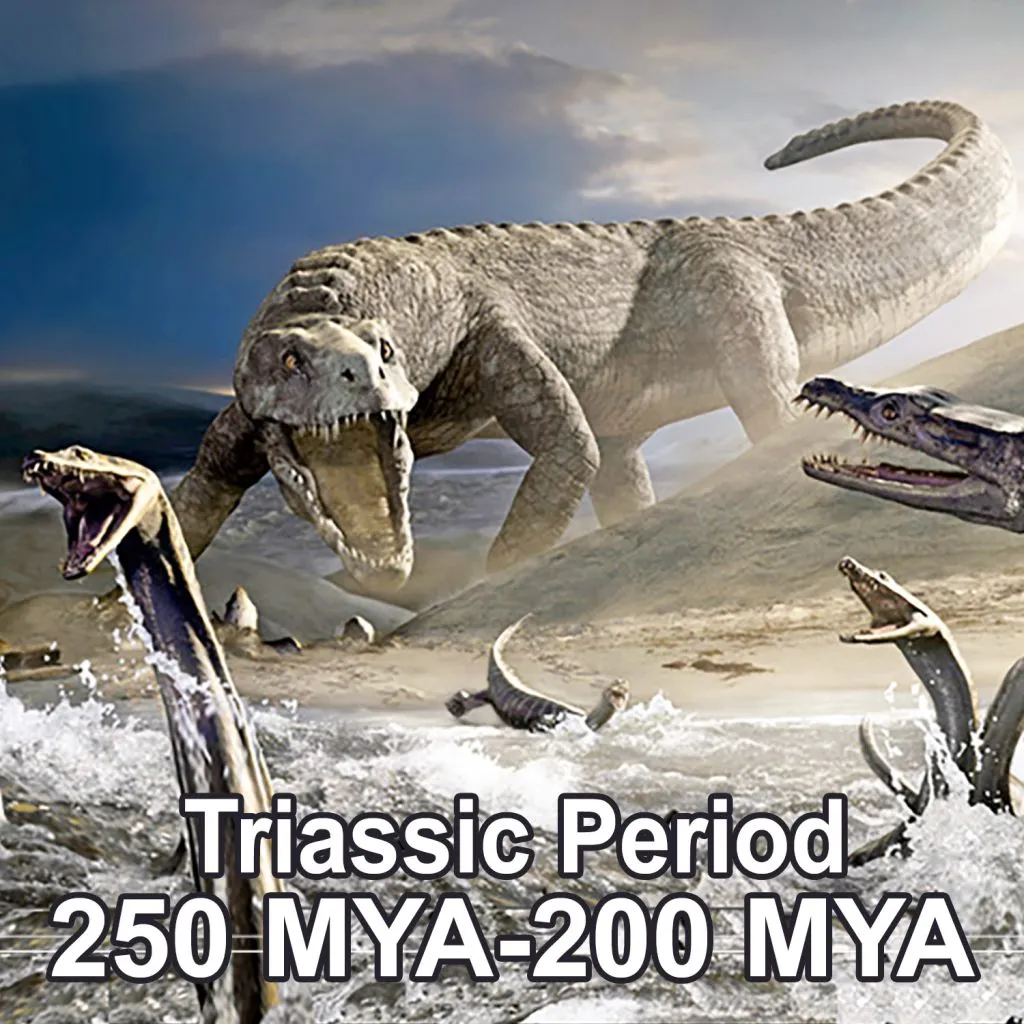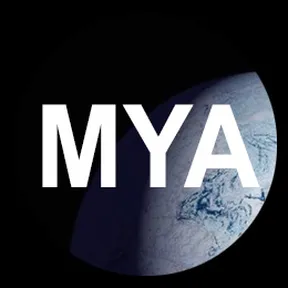
The Triassic Period
The Triassic is a geologic period and system which spans 50.6 million years from the end of the Permian Period 251.9 million years ago (Mya), to the beginning of the Jurassic Period 201.3 Mya.
The Triassic is the first geologic period of the Mesozoic Era, both the start and end of the period are marked by major extinction events. It spans 50.6 million years, from the end of the Permian Period 251.902 million years ago (Mya), to the beginning of the Jurassic Period 201.36 Mya.
The Triassic period is subdivided into three epochs: Early Triassic, Middle Triassic and Late Triassic.
The Triassic began in the wake of the Permian–Triassic extinction event, which left the Earth's biosphere impoverished; it would take well into the middle of this period for life to recover its former diversity.
Therapsids and archosaurs were the chief terrestrial vertebrates during this time. A specialized subgroup of archosaurs, called dinosaurs, first appeared in the Late Triassic but did not become dominant until the succeeding Jurassic Period.
The first true mammals, themselves a specialized subgroup of therapsids, also evolved during this period, as well as the first flying vertebrates, the pterosaurs, who, like the dinosaurs, were a specialized subgroup of archosaurs.
The vast supercontinent of Pangaea existed until the mid-Triassic, after which it began to gradually rift into two separate landmasses, Laurasia to the north and Gondwana to the south.
The global climate during the Triassic was mostly hot and dry, with deserts spanning much of Pangaea's interior. However, the climate shifted and became more humid as Pangaea began to drift apart.
The end of the period was marked by yet another major mass extinction, the Triassic–Jurassic extinction event, that wiped out many groups and allowed dinosaurs to assume dominance in the Jurassic.
The Triassic was named in 1834 by Friedrich von Alberti, after the three distinct rock layers (tri meaning "three") that are found throughout Germany and northwestern Europe:
Red beds, capped by marine limestone, followed by a series of terrestrial mud- and sandstones-called the "Trias".

















































